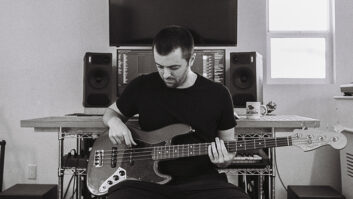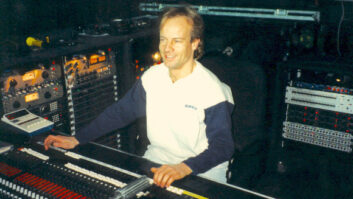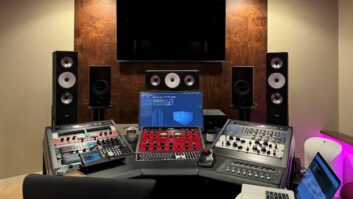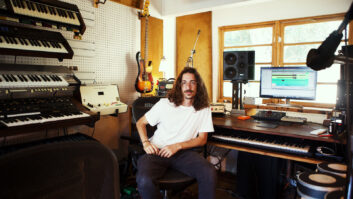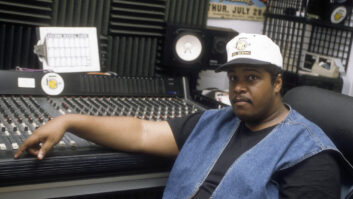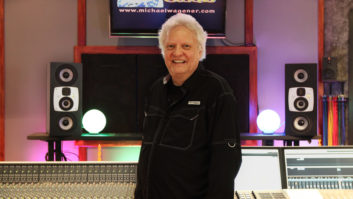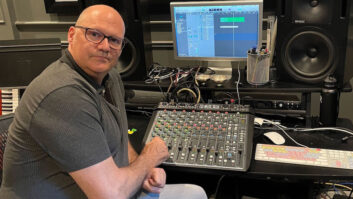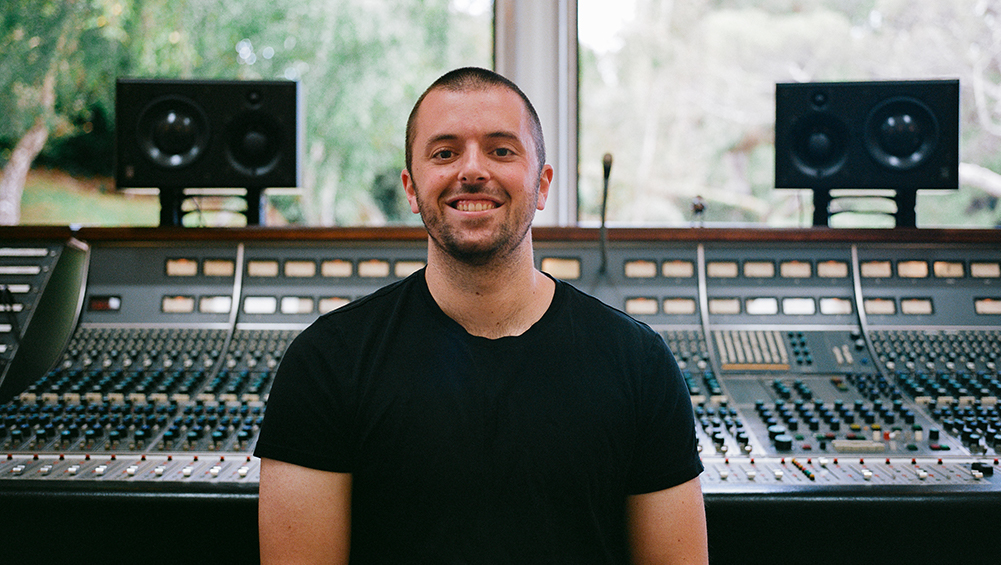
Los Angeles, CA (January 17, 2024)—In the middle of one of the most hectic urban areas of Los Angeles, Rob Bisel’s home and its detached studio are an oasis. The multiple Grammy-nominated producer (Kendrick Lamar, Doja Cat)—who was named 2022 Top Producer of the Year by BMI and No. 1 producer on Billboard’s R&B/hip hop producer charts—lucked out with his studio space, which was already converted when he moved in.
Bisel has put his stamp on the facility with numerous guitars, a piano with its guts hanging out and various synthesizers. These tactile instruments are key sources of inspiration for the 31-year-old producer/engineer, who is riding high from the success of SZA’s SOS. He is one of the primary producers and songwriters on the collection, with 15 of the album’s 23 songs to his credit, engineering credit on all songs, and mixing credit on ten tracks, including the record-breaking “Kill Bill.”
The connection to SZA was made through Rick Rubin, in whose famed Shangri-La studio Bisel was a staple, working his way up from an internship. After six years at Shangri-La, in January 2020, Rubin asked if Bisel would come to his studio on the Hawaiian island of Kauai to work with SZA.
“I liked the way some of my friends found an artist and did everything from producing to engineering to mixing, like a one-stop shop,” says Bisel. “I wanted that for myself. I had two artists in mind, and one of them was SZA.”
They worked in a guest room at Rubin’s place on the island, with only SZA and her Neumann U47 microphone and Bisel and his Pro Tools rig—a modern demo setup in a comfortable space, ideal for a vocalist. The two weeks of sessions in Kauai went so well that when the pandemic kicked in, SZA created a bubble with Bisel so that they could carry on working, mainly in her home studio. There, they worked not dissimilarly to how they worked on the island.
BUILDING A SONG
Bisel switches between Pro Tools and Ableton, leaning toward the latter when he’s making beats. “It’s uncommon to know both super well,” he says. “Usually, the people who know Pro Tools started working in a studio, where you’re entrenched in Pro Tools. People who know Ableton oftentimes started making music in their bedroom and don’t feel the need to make the switch to Pro Tools.
“I feel much more confident and faster and organized when I’m recording vocals in Pro Tools,” he continues. “I can control the sound better and I get better mixes for vocals, but when it comes to jamming and coming up with ideas, especially in group settings, you can’t beat Ableton. The way you can add tracks on the fly or add plug-ins or loop things, unloop things, easily bring in samples, take samples out? In terms of arranging ideas, Ableton is a lot better in the way you can quickly shuffle and move things around.”
Cover Story: Jack Antonoff — The Mix Interview, Part 1
Ideas often begin with Bisel’s tactile instruments. This goes back to his musical training, which began with piano lessons followed by flute in the school band, before moving on to the bass guitar. At the same time, he was singing in choirs from middle school through college at University of Michigan, where he earned a sound engineering degree.
“I don’t know if there is a single song I produced for SZA that didn’t start with a physical instrument in this room,” Bisel says. “‘Ghost in the Machine’ started on that piano. ‘Kill Bill’ started on this [Sequential Circuits] Prophet. Those songs started the week I got that piano and that synth. I was inspired by having a new toy. It could also be a toy in the box, like a new plug-in that has a sound or idea you’ve never heard.”
An accordion Bisel was given as a high school graduation gift came into play on “Low,” another song on SOS. It began with Allessandro Buccellati jamming on it, building an idea. That idea was sitting around for a year and a half before an A&R contact passed it to Aire Atlantica, who made beats from the accordion source material. This recontextualization felt right for SZA, who recorded, wrote and cut her part to it in one day, right at the end of working on SOS.
